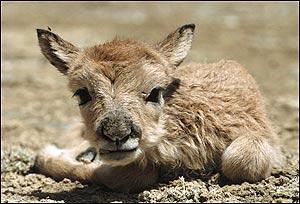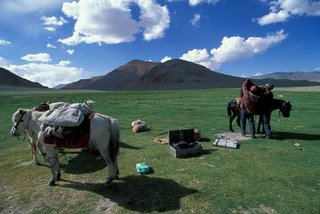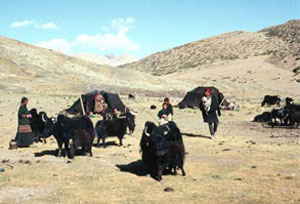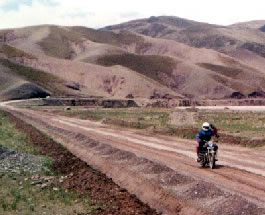leaves us with a mission to do............

Located in Northwestern Tibet, the Chang Tang Wildlife Preserve is the second largest wildlife preserve on Earth. Some 300,000 square kilometers of Tibet's wilderness have been protected by the preserve since it was created in 1993. Chang Tang is one of the last undisturbed range lands in the world, and several endangered species inhabit the area. Among them is the chiru...
A chiru is a species of antelope native to the Tibetan Plateau. They inhabit China's Tibetan Autonomous Region (especially Chang Tang), along with neighboring Xinjiang Province and Qinghai Province.
Chang Tang Preserve itself is fascinating. Most of it rests at an altitude of between 14,500 feet and 16,500 feet, though there are a number of peaks over 20,000 feet. There are no forests because of the altitude and the land is too cold for farming.
Besides chirus, the preserve is inhabited by yaks, Tibet's wild ass, blue sheep, gazelles, the common wolf, brown bears, the lynx, snow leopards, foxes and rabbits. Only the wolf is not legally protected.
About half of the preserve is alpine steppe, but there is also bare rock and glacier land that supports almost no vegetation. And there is desert in the north of the preserve.
National Geographic Radio Expedition recent sent a team to Chang Tang in search of the birthing ground of the migratory chiru.
Chiru are endangered in part because of the fine quality of their wool; a shawl made of chiru wool can sell for as much as $15,000 U.S.
The chiru has been studied in depth. But until now one great secret remained: no one had been able to determine where female chiru go each year to give birth.??























